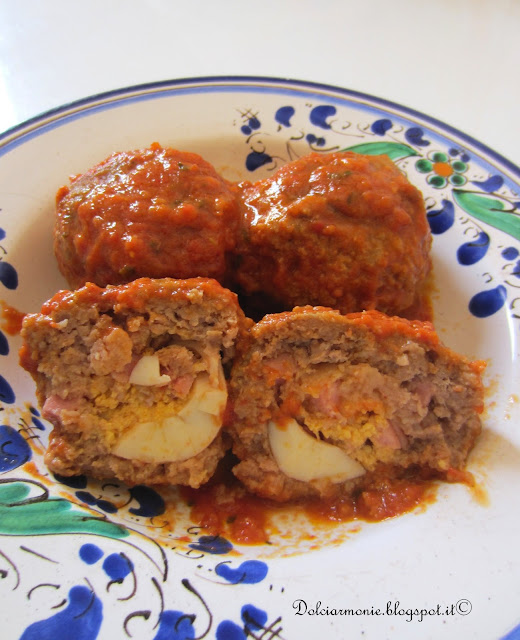 |
Un dei tanti bei negozi a Taormina. (Foto scattata dall’autore,
7 agosto 2011) |
Mercoledì scorso, andai al supermercato per comprare le melanzane, per fare la caponata. Nessuna melanzana! Manco una melanzana! (Be’, ce ne fu una. Ma, per fare un racconto più drammatico ...) Nemmeno una melanzana!
Le zucchine ci furono — belle, quasi perfette. Ne comprai sei, e decisi di tentare una caponata di zucchine.
Insuccesso IIº: Le zucchine contengono molto più acqua delle melanzane. I pomodori inscatolati contengono più liquido di quei freschi. Fui così cauto di non bruciare gli ortaggi e di conservarne il liquido che non si rosolarono affatto. Fallimento completo.
D’altro canto, il sapore non fu cattivo. E non mi potei permettere di buttare tantissimo cibo. Dunque, ne misi tutta questa caponataccia in vari barattoli di vetro (fra 350 e 500 g), e li misi in frigo.
Quarantotto ore passarono.
Ne aprii uno di questi vasetti. Gli ortaggi avevano assunto un’altra qualità. Mi resi conto che, per errore (per
due errori!), preparai una meravigliosa giardiniera siciliana!
Ingredienti
olio d’oliva extravergine
2 cipolle, affettate
3 spicchi d’aglio, interi
1 peperone dolce rosso (NON verde), affettato
4 gambi di sedano, tagliati in quadrati
6 zucchine, tagliate a medaglioni
6 pomodori pelati, tagliati (Se usiate i pomodori dalla scatola, NON aggiungere il liquido della scatola, solo il liquido naturale dentro i pomodori.)
250 mL aceto di vino rosso (io di cabernet sauvignon. Se ne troviate uno di nero d’avola, tanto meglio!)
300 g olive verdi (non nere) snocciolate, intere
75 g capperi, sciacquati bene
1 cucchiaione (13 g) zucchero
pepe nero, frescamente macinato
basilico fresco
Preparazione
Ho usato la mia beneamata casseruola a ghisa. E adesso, condivido con voi un dei
più grandi segreti della casseruola a ghisa:
Quando volete preparare gli ortaggi, oppure la carne con gli ortaggi, non avete bisogno di aggiungerci il liquido. Mettete il foglio di alluminio fra il coperchio e la casseruola. Tutto si cuoce al vapore, niente si brucia, e i sapori si amalgamano in una maniera che voi vi crediate di esser salito in Paradiso!
Tornando alla terra e alla nostra giardiniera:
Scaldate la casseruola e aggiungete i primi 5 ingredienti. Mettete il foglio e il coperchio, e a fiamma abbastanza bassa fate cuocere 10/15 minuti.
Aggiungete le zucchine. Tornate il coperchio e il foglio, e a fiamma sempre bassa fate cuocere 20/25 minuti.
Aggiungete i pomodori, tornate il coperchio e il foglio, e fate cuocere 10/15 minuti.
Rimuovete il coperchio e il foglio. Aggiungete l’aceto e lo zucchero. Aumentate la fiamma, e fatela cucinare, scoperta, per 5/10 minuti o finché comincerà a bollire.
Aggiungete il resto degli ingredienti e mescolate bene. Se le zucchine
siano già pronte — morbide ma NON disintegrate — spegnete.
Se le zucchine siano ancora al dente, abbassate la fiamma, tornate il coperchio e il foglio, e lentissimamente fate cuocere tutto per una decina di minuti.
Spegnete, fate raffreddare abbastanza per mettere in frigo, e scordatevene per 48 ore.
Una giardiniera con i sapori e lo spirito della caponata — ne diventerete dipendente!
























